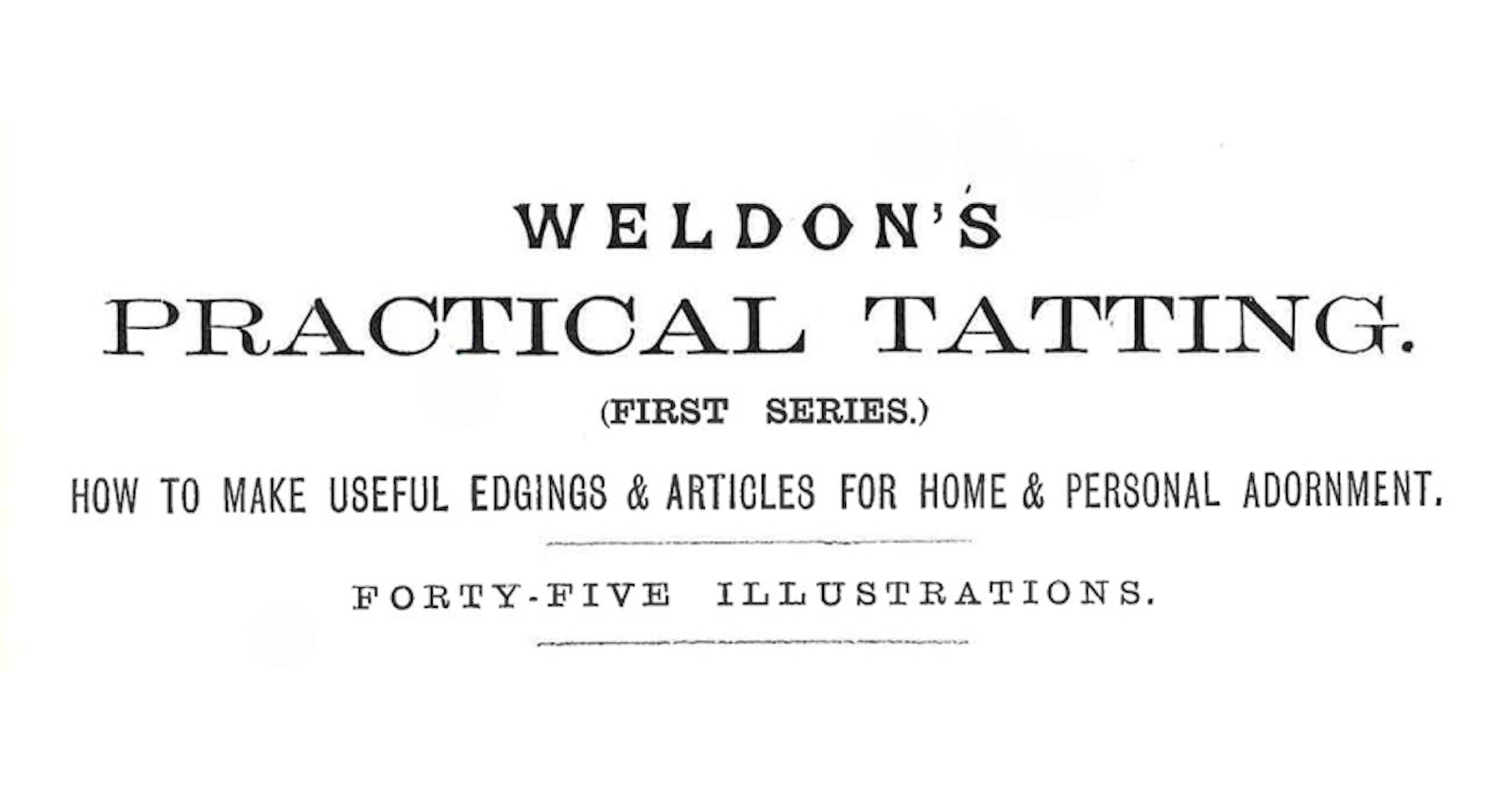Weldon’s Practical Needlework houses a wealth of information on Victorian tatting. Here’s our fifth installment in this series from Weldon’s Practical Needlework, Volume 4. The following are methods for working scallops and double stitches. It is reproduced here just as it appeared in England in 1889. No alterations or corrections were made.
Illustrations from Weldon’s Practical Needlework, Volume 4.
Fig. 8.—DETACHED SCALLOPS OF DOUBLE STITCHES.
MAKE a loop on the fingers with the shuttle thread, and work 12 double stitches as illustrated (see Fig. 1, 2, and 4), slip the fingers out of the loop, and draw the loop up into a semi-circle or scallop (see Fig. 8); make another loop on the fingers with the shuttle thread, and beginning quite close to the last double stitch of last scallop, work again 12 double stitches, slip the fingers out of the loop, and draw the loop into another scallop; and repeat the same until proficient.
Illustrations from Weldon’s Practical Needlework, Volume 4.
Fig. 9.—SCALLOPS DRAWN UP AND CONVERTED INTO OVALS.
MAKE a loop on the fingers with the shuttle thread, and, as in the foregoing example, work 12 double stitches, withdraw the fingers from the loop, and draw the loop up quite close and firm in the shape of an oval, the last stitch of the oval should touch the first stitch; * make another loop on the fingers, and begin to work a double stitch, leaving ⅜ of an inch of cotton from the oval just made; do in all 12 double stitches, and again draw up close, and continue from * for the length required (see Fig. 9).
If you missed any part of this series on Victorian tatting from Weldon’s, you can catch up on all of the blog posts here. Find out more about tatting in our video download Shuttle Tatting with master tatter Georgia Seitz.
Featured Image: Weldon’s Practical Needlework, Volume 4, offers up a wealth of information on Victorian tatting.



